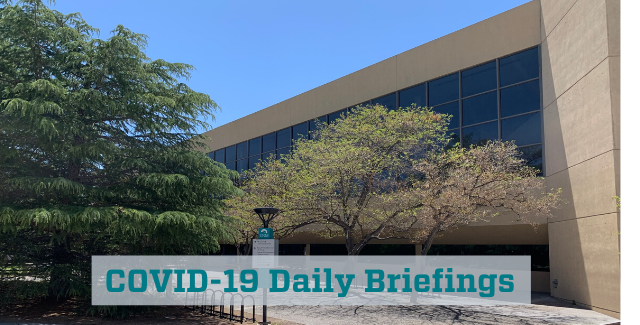Document Type
Brief
Publication Date
4-10-2020
Abstract
Executive Summary:
Extra NM HSD SNAP benefits. NM cases >1000. Meds supply chain threatened. Mass graves in NY. Surgeon General screening app. Presidential briefing. Italian healthcare worker deaths. Taiwan tiered care model. Communicating risks to public. French public demand hydroxychloroquine. Vaccination pause dangers. Retesting needed after discharge. CDC report geography and incidence. UW clinical informatics response. UW preparedness guidelines. Wuhan outbreak control. CDC asymptomatic exposed worker guidelines. Mask innovation. Unemployment spikes. Workforce gaps. Workspace modifications reduce transmission. Guidelines and recommendations: ER physician, surgery, cardiopulmonary resuscitation, chest imaging, geriatrics, critically ill children, postpyloric tube placement, genitourinary malignancies, obstetrics, and home work health. Remdesivir clinically promising. Hydroxychloroquine safe but higher mortality with azithromycin. Lockdown health risks. Post-ICU syndrome. Tetracyline therapy potential. ACE2 review. Repurposing candidates. Patient self-triage tool. Video of aerosol spread and lingering. Modeling challenges. 34 new clinical trials registered today.
Recommended Citation
Lambert, Christophe G.; Samuel Anyona; Shawn Stoicu; Anastasiya Nestsiarovich; Praveen Kumar; Nicolas Lauve; Evans Raballah; Perez Olewe; Carolyne Ndege; Hannah Groves; Danielle Rivera; Estefania Montanez; Tudor I. Oprea; Orrin Myers; Rachel D. King; Andrew S. Rowland; Kristine Tollestrup; and Douglas J. Perkins. "2020-04-10 DAILY UNM GLOBAL HEALTH COVID-19 BRIEFING." (2020). https://digitalrepository.unm.edu/hsc_covid19_briefings/6


Comments
Disclaimer: The UNM Global Health COVID-19 Briefing is provided as a public service. Sources include not only peer-reviewed literature, but also preliminary research manuscripts that have not been peer reviewed along with lay news media reports. The peer-review process often results in manuscript improvement, with corrections made for errors and unsubstantiated conclusions being corrected. Furthermore, many headlines and summaries in the briefing are written by student volunteers and others who may lack subject matter expertise in this rapidly evolving field. As such, the headlines and summaries should not be regarded as conclusive. Instead, readers are encouraged to use the briefing to identify areas of interest and then use the embedded links to read and critically evaluate the primary sources.